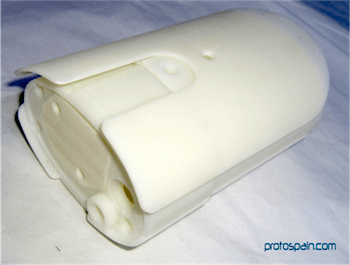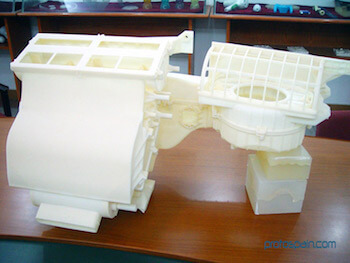SLS (Selective Laser Sintering) / SLA (Stereolithography)
Rapid Prototyping with Stereolithography (SLA)
SLA (Stereolithography)is a rapid prototyping process that works in a layer by layer fashion to create a model. This technology uses photopolymeric liquid resins that solidify exposed to a laser beam which traces each section of the 3D model on the surface of a photopolymer resin tank, thus materializing the CAD model of the part, layer by layer. SLA is excellent for the rapid manufacturing of small electronics, appliances and medical devices.
The material used with SLA can be the 14120 photosensitive resin produced by SOMOS and Materials GP60 These resins have characteristics very similar to ABS, and the production tolerances are around ± 0.05 mm.



SLA Basic Aspects
- 3D designs must be in .STL format.
- Using the SLA 3D software program, the object is virtually placed in the work tray.
- This same program selects the layers and support structures to carry out the printing.
- The computer controls the laser, which draws the part according to the 3D design dividing the information of each layer in points that are printed on resin copolymer.
- The resin copolymers react with the UV laser, forming a thin cured layer.
- After solidification of one layer, the tray lowers from 0,1 to 0.15 mm and the residual resin is cleaned to allow another layer of resin photopolymer to deposit and cure.
- Every new layer bonds to the previous one This “layer by layer” process is repeated until the entire piece has been drawn.
- When finished, the tray rises to the top. The piece made by SLA and the tray are tilted to allow any uncured resin photopolymer to drain. The piece is removed from the tray and cleaned with alcohol, then the supports from the structure are removed.
- Finally, the piece is sent to post-production to apply the required finish.
